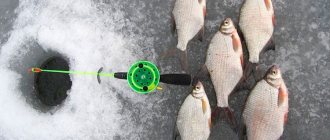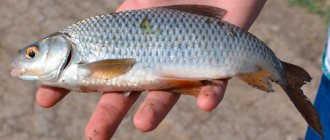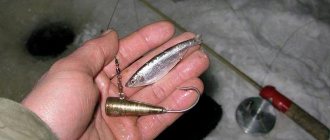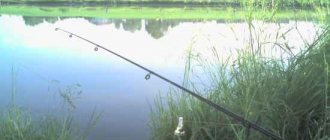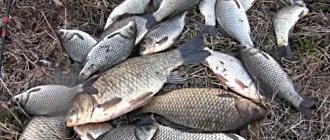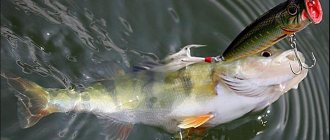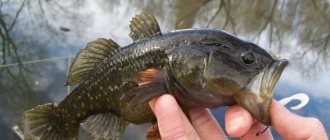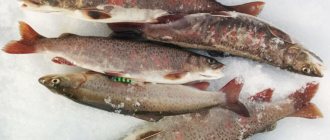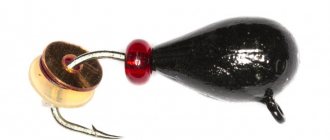This article covers the following issues of winter fishing: equipment and equipment, going out on the ice and safety precautions, tackle and fishing method for beginners. If you are specifically interested in the process of winter fishing, a separate story is devoted to this: “Fishing from ice: methods, techniques and tactics” (approx. Dr. Riboedoff).
I was “inspired” by an acquaintance to write an article about winter fishing. He is obsessed with summer fishing and has good results in this field. But if you start talking about winter fishing in front of him, he wrinkles his nose and grumbles: “I don’t understand you, “penguins.” Sitting in the cold means freezing your snot. How to tinker with the bait, with the fish? This is masochism. Maniacs, perverts! A normal person sits at home in winter and drinks vodka.”
Briefly about what this “footcloth” is dedicated to: it was written as if “in contrast” to the words of my friend. But in it I will not only give arguments in favor of the fact that winter fishing, despite the extreme, is within the capabilities of an ordinary person and can bring great pleasure. I will briefly describe the technology of winter fishing and mention useful developments designed to simplify and facilitate the process itself - including those that my friends and I ourselves “figured out” (pay attention to the blue “advice” blocks and what is highlighted in them in bold font). Therefore, this article can be considered a guide to action. And it is especially addressed to those who are taking their first steps in winter fishing.
Pros and cons of winter fishing over summer
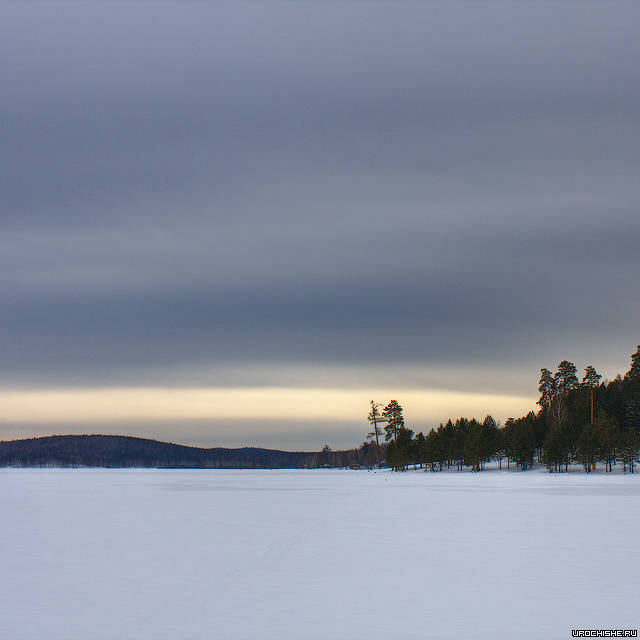
Winter fishing is a natural continuation of summer fishing. But which one is better? The question, I think, is incorrect. Both have their pros and cons. Both have something of their own, unique.
pros
- The main advantage of winter fishing over summer fishing is the ability to quickly change the place of fishing and fish in places where you can only get to the open water from a boat. And in winter you can walk to any point in the reservoir. Simply put, the fisherman is not limited in his choice of place.
- Winter gear is very compact. They take up less space than summer ones and are easier to fish with. Winter gear has better feedback.
- During winter fishing, it becomes possible to fully use the fascinating, reelless method of fishing.
- In winter you can catch burbot, which in summer does not bite in ordinary reservoirs. And other fish, such as whitefish or smelt, active in cold water.
Minuses
- The main disadvantage is the minus in Celsius (pardon the pun). This is what scares off inexperienced fishermen. At winter temperatures, fishing turns into a little hard labor: your hands are cold, your fingers don’t obey, the water in the holes freezes and freezes on the fishing line. This makes it difficult to control the gear and the sensations are unpleasant. But - at the very beginning. Everyone who takes the first step on the ice quickly develops the skill of overcoming the cold: their hands get used to low temperatures, and their heads figure out how to keep their fingers less cold and move the tackle more deftly. But for experienced fishermen, a winter minus is not a minus (once again, I apologize for the pun).
- Many fish become capricious in winter. At the height of the season - in the middle of nowhere - they lose interest in the bait. But this makes the fishing itself more interesting. The fisherman has to use tricks to “persuade” the fish to bite. And it’s clear that for experienced fishermen there is no dead winter - they have a catch throughout the entire freeze-up period.
- In winter there are more small fish in the catches than in summer. But it depends on who. Experienced fishermen carry large fish even in winter.
- Some fish, for example - carp, tench, crucian carp, catfish - stop biting in winter and go into hibernation. This is probably the only disadvantage of winter fishing over summer fishing, which cannot be overcome either by tricks or experience. But there are rare bodies of water where you can successfully catch crucian carp in winter.
- Winter fishing, unlike summer fishing (for which you just need to take a fishing rod, a can of worms and a bag for the fish), requires the fisherman to acquire a bunch of equipment and equipment. Minimum set (except for gear and attachments): ice auger, shabalka, box, set of warm clothes. Often this list is supplemented by a tent and a means of heating it. But this belongings makes winter fishing accessible to many. And recently, thanks to the advanced industry, this availability has seriously expanded.
In the mid-2000s, on the Verkhnemakarovsky Reservoir, in a crowd of “penguins,” my friend and I saw a girl catching ruffs with perches. It was an event! And now on the ice I almost always see females. Which speaks volumes about the fact that winter fishing can be done by anyone.
As you can see, the devil is not as scary as he is painted.
Fishing in snags
Almost all fishermen know that large fish often like to settle in thick snags. Fishing in such places with the help of a vertical spoon or balance beam, of course, is possible, but despite all the tricks and tricks, the loss of expensive baits is inevitable. But it’s one thing to tear off a cool spinner made to order by a craftsman, or an expensive balancer, and another thing to tear off an ordinary head with an elastic band. Yes, and the rubber band clings to cramps less often when fishing vertically - it knocks on the snags with its head, thereby saving the hook from a direct hook.
Playing in half-water over cramps is not always profitable (in winter, pike do not jump out from the bottom onto high-playing snags), so they try to find a clean nickel of the bottom next to the snags. The ripper on the 10-12 g head sinks to the bottom, immediately smoothly, with slight acceleration, rises half a meter and is held for a couple of seconds. Then it drops down, but literally five centimeters does not reach the bottom, then there is a second pause. This game is repeated five times. Then they begin to work like a spinner: a rather sharp rise of 30 centimeters, immediately drop down, pause for a couple of seconds. When dumping, do not hit the bottom with bait - large pike do not like this in winter.
They also fish successfully with a twister, also working as a vertical spoon, and again the pauses are short (up to 2 seconds), because the jig head, unlike a vertical one, does not move to the side and quickly calms down after being released. Usually, during the difficult period of deep winter, the effectiveness of vertical rubber drops somewhat, but in the last ice these baits become real favorites.
Preparing for winter fishing
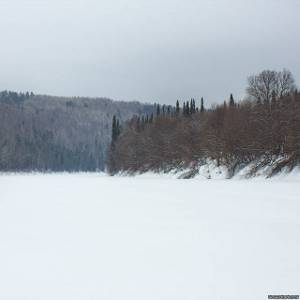
For the first time on the ice, you need to prepare carefully - without skimping on funds. And in advance - from the beginning of autumn.
Clothes and shoes
Usually, fishing from ice does not involve active muscle work, so you will have to be thoroughly insulated. Here is a proven concept of winter fisherman's clothing:
- Underwear thermal underwear . It removes moisture from the skin, preventing rapid heat loss, but as insulation it is so-so. You can use two sets - a thin summer set - for positive weather and slight cold snaps, and a thick winter set - for severe frosts.
- A sweater with a good neckline (fleece is in fashion now). Same function + specific insulation. When there is a thaw, it may be unnecessary.
- Winter fishing suit of the “overalls + jacket with a hood” system OR a budget set: an old down jacket + insulated overalls.
It's the overalls ! Firstly, it provides an additional barrier from the cold for the torso, and secondly, the problem of a blown lower back, which is relevant when wearing trousers, is completely solved. A hood on the jacket is also required.
- Scarf (optional). No matter how necessary it is if the sweater has a good warm collar. But a scarf can be useful in severe bad weather with wind and frost - it can protect your mug from the cold.
- Knitted hat.
Keeping your feet warm during winter fishing:
- Regular socks , but better special ones - “thermal underwear”.
- Warm wool socks .
- Modern winter fishing boots made of porous rubber with liners OR a budget option - felt boots in high rubber galoshes or chemical protection shoe covers
In stores you can see shoe covers for fishermen - galoshes with rubberized tops, inside of which there are chuni inserts. There is a variety of these shoes for hunters, where the tops are made of Oxford bag shoes. I once bought these inexpensively (hunting ones), took out the inserts and inserted felt boots. I went fishing in these shoes for about 10 years and didn’t blow my socks off. True, the sole there was a bit slippery, although it was studded - due to the sparse terrain. In the city and towns, you had to walk carefully on ice or compressed snow. But now there are shoe covers on sale that are free of this drawback. Someone will ask - why “collective farms”? There are winter fishing boots - they are cheaper than shoe covers and felt boots. And it’s easier, that’s for sure. My answer: felt boots are much warmer . No matter what the boot manufacturer writes on the box! Verified.
Hands are also warm:
- Special mittens-gloves for winter fisherman (I didn’t like them), OR just fur, cotton, synthetic padding, or fleece mittens , OR
Our two-layer system for protecting hands from the cold : thicker work gloves, converted into semi-gloves (cut off all excess and hem them) + mittens on top. This set allows you to deftly handle gear. The half-glove prevents the hand taken out of the mitten from quickly freezing.
Everything is sold in any normal fishing store. It’s worth checking out a workwear store—they’ll probably have clothes for working in the cold.
Equipment
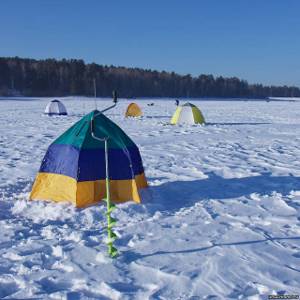
I’ll start listing winter fisherman’s equipment with what allows you to retain or radiate heat.
- Tent . Protection from wind, snow, frost. The best means of preventing holes from freezing and darkening them. There are different types of tents for winter fisherman; choosing them is a separate issue.
- Heater . Allows you to create a comfortable temperature in the tent or enough so that the holes do not freeze. We have a separate article dedicated to tent heaters.
- Thermos - for hot tea. It’s not always worth taking a tent with you, but you should have a thermos with tea. It also warms up well and complements the fishing process with pleasant moments.
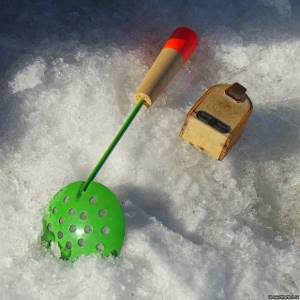
Next - equipment that is directly related to the process of winter fishing:
- Ice screw . Choosing it is a separate topic, but to begin with it is better to take simpler and cheaper ones - with straight (not spherical) knives - which are easier to sharpen, diameter - about 150. Used for drilling holes. By the way, this can be a good way to warm up.
You can also tie a tent to an ice auger by first drilling it half-thick into the ice. Just make sure there is no water (it will freeze!) and, if possible, it is better to scoop out all the ice chips from the hole.
- Shabalka . The most required item! It is convenient to place a fishing rod on its handle. She can also remove dumplings from the pan. Some enthusiasts use it to scrape ice chips out of the hole after drilling.
- Hook . Magic thing! If you take it with you, you will catch small things throughout your fishing trip. If you forget it at home, a large fish will definitely bite and break the fishing line.
- Fisherman's box . It stores gear, a thermos and a supply of food, and is equipped with a window for storing fish. Well, and most importantly, sitting on it, the fisherman casts a spell over the hole.
- A rag tucked into the top of a boot. Needed to give signals to low-flying aircraft. Some enthusiasts wipe their hands of fish mucus.
Why is a crate better than a high chair? You can store all your junk in your backpack and sit on a folding camp stool. But the box protects the butt well from the piercing wind and reduces heat loss.
Tackle
The first thing I advise is to buy a universal winter fishing rod with a “handle and reel” system. They can be used to fish with a jig with a nozzle, with a simple float tackle, try to “reel without reeling”, or use small spoons and balancers. Just the thing for mastering the process of winter fishing.
The fishing rod is equipped with a nod, for starters - a purchased one. It doesn’t matter what it’s made of, the main thing is that it’s flexible and elastic enough—it doesn’t hang “like snot” under the weight of the bait, but it doesn’t remain almost straight, but bends by 45 degrees. You’ll have to purchase several options and select and adjust.
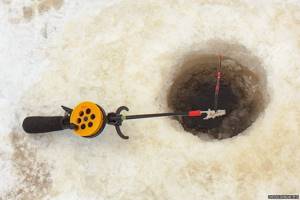
The picture above shows a fishing rod with a homemade nod made from a plastic card and a piece of nipple rubber. It is convenient to attach such a nod (as well as one made entirely from a nipple) with an alligator clip attached to the tip of the whip, purchased from electrical goods.
A 0.1 mm fishing line is wound onto the reel. The fishing line is threaded through the hole where the nod is attached to the whip and through the ring at the tip of the nod, and a jig is tied to the end of it; a simple “pellet” is enough to start with. It doesn’t matter what it is made of - lead or tungsten. How to tie a jig is described in detail here.
The fishing rod is almost always equipped with legs that fit tightly onto the whip. them with an advanced clothespin with a spring - it holds much stronger and can be attached anywhere on the whip - you can change its angle and the tension of the nod.
Be sure to have spare jigs, at least three of them.
Other accessories
Sometimes the fish swallows the bait deeply. Spiny ruffs are especially successful in this. Fiddling with them in the cold is another task. This is where an extractor - a small device that resembles a screwdriver.
Sometimes the jig gets caught on a snag. In order not to tear the line and not lose the bait, it is better to use a cut-off .
Fish can be fed directly from the hole. But when the depth at the fishing spot is 3 meters or more, it is better to do it with a feeder . Otherwise the bait will be carried away by the current, or it will scatter too much.
To deliver the release or feeder, use a reel with a nylon cord and a carabiner at the end. It is not recommended to use fishing line - it springs . Instead of a reel, you can take a winter fishing rod with an open reel without a whip (I had a broken one in which the whip could not be attached - it turned out to be very convenient). It is better to “mark” the cord with figure-eight knots every meter - then during feeding it will be possible to accurately measure the depth.
For the nozzle you need a bloodworm .
A budget (and disposable) option is a matchbox. Insulated - foam box. Universal - made of birch bark.
How to tie a bulldozer correctly
The attached jig forgives a lot - tie it upside down, and the fish will still be caught with bloodworms. You don’t have to play at all – and it often takes you well when standing still. Without a nozzle, negligence does not forgive. I tied the fishing line incorrectly - and there are no bites, even if the bait itself is wonderful.
This fully applies to small bolds. It would seem that it could be simpler: pass the fishing line through the ring of one hook, through the transverse hole in the upper part of the bait, through the ring of the second hook, and tie a regular loop with a figure-eight knot. But in reality it's not that simple.
Firstly, the length of this fishing line loop must be strictly defined, in the region of 10-12 mm. Only in this case will the hooks play as they should. If the loop turns out to be longer, say, 2 cm, then when the small rod moves downwards, the hooks rise up, one is ahead of the second, moves into the corner under the knot, is clamped, and the snag begins to work with one hook, turning into an almost useless piece of metal - there are no bites at all.
Secondly, it is necessary to use a fishing line of a certain diameter. A small balda is the only bait that works significantly worse on thin fishing lines. And all because of the same movable hooks. The thinner the line, the lower its rigidity, and if the vein is too thin, under the weight of the bait, the loop tends to take the shape of a triangle - the hooks converge at the top of their rise, and the fish does not bite. With thicker line, the loop works similar to a teardrop shape, and everything is fine. By the way, it is precisely because of these important points that experienced fishermen do not see the point in the bulldozer, where a metal loop is soldered into the upper part of the snag and hooks are attached through it. They must be spaced apart, and the hole in the body of the bait helps spread them to the required distance.
This is such a “trifle”. It seems that there is such a thing here - tying a banal noose on a bulldozer, but in fact, the right decisions in this matter determine whether the fish will bite or turn up its nose, and we, in bewilderment, will attribute our failures to bad weather, inappropriate pressure, the wrong choice of bait and similar factors.
Food for winter fishing
Oh, how nice it is to sit in the middle of a snowy desert of a frozen pond, eat a sandwich with tea, admiring the powdered coastal pines, frosty reeds and the winter sky covered with cirrus clouds. But the fish, the infection, as luck would have it, begins to bite at this very moment.
A supply of food for winter fishing is no less important than warm clothes and shoes. Firstly, this is another heating method. Secondly, it is a necessary source of replenishment of proteins, fats and carbohydrates in extreme conditions.
Previously, I didn’t take a steam bath and took with me on fishing, except for a thermos with tea: sliced bread and sausage, boiled eggs, boiled potatoes. But over time, I realized that it was better to have not only hot tea with me, but also heated food, and I got a soup thermos (with a wide neck). It became a reliable storage for boiled sausages, hot porridge with meat, and boiled potatoes. And even dumplings, richly flavored with butter.
It is very good if your tent heater has a cooking function, or if you use a primus or gas stove instead. You can cook something with them, for example, cook the same dumplings. Or you can have fish soup - if you have a catch.
Soft spinner for winter
Foam rubber has long been successfully used for jig fishing for pike perch in open water. What about winter fishing? Throw the same jig into the hole? Maybe, but skilled winter fishermen came up with something else, having experimented with an interesting vertical spinner - they actually catch pike perch. To do this, take an ordinary vertical pike-perch spoon and stick thin foam rubber on its upper surface. They cut it around the perimeter of the spinner, only at the ring for tying the fishing line the foam tail protrudes 1.5-2 cm. The action of the bait turns out to be easy, with a sort of laziness, the pike perch loves this.
This bait has only one drawback - in severe frosts, the water absorbed into the foam rubber instantly freezes. But any problems can be solved. So, after removing the spoon from the hole, the water can be squeezed out, and when fishing at great depths, the frozen foam should move away while the bait reaches the bottom.
Safety
The main enemies of the winter fisherman:
Unstable ice
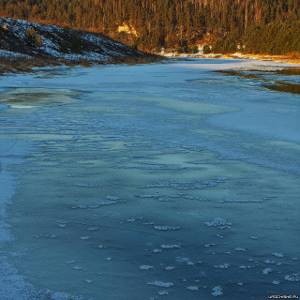
It happens: in the first ice - when it is still thin, and in the last ice - when it is loose and corroded by spring water. There is only one way to protect yourself: if you’re not sure, don’t interfere . It’s better to sit out at home for a day or two than to fail.
But if you suddenly happen to find yourself on a body of water at a dangerous time, you should behave extremely carefully. Don't wander around on the ice without anything to do. Leave the same way you came. Do not crowd with friends (recommended interval is 5 meters). Beware of places with marsh vegetation and algae - they freeze later than others. And constantly listen. Unstable ice usually “warns” the fisherman with a crash (but not always!). It’s worth taking special life preservers with you - they will help you get out of the ice hole if the ice suddenly breaks.
Recently, the industry has been producing waterproof winter suits for fishermen , designed to survive in icy water. Apparently, they are made according to the “drysuit” principle for extreme rafters, only much better insulated (not for deep winter, but for the first and last ice for sure). In common parlance, such costumes are called “floats.”
The optimal ice thickness is the width of your palm (more than 7 cm). You can definitely walk on this. But it should be taken into account that this thickness may also include a layer of loose, frozen snow. Its strength is worse than monolithic, transparent ice. And on the reservoir there may be places where the ice is thinner and it is already dangerous to be on it. In your spare time, I recommend reading the story “What is the difference between a photographer and a fisherman” - it describes how you can fail on such ice and what the sensations will be like afterwards.
Low temperature
Frostbite while fishing is not that uncommon.
The author of the article once almost got frostbite when he gave his mittens to a friend (who conveniently forgot his in the car) and put on rag gloves instead. No, everything was fine while fishing - my hands were successfully hidden in my pockets and warmed up. But when we had to go from the reservoir to the parking lot, a strong, strong wind blew, and we also had to drag the ice auger in our hands. When they arrived at the place, the fingers turned white and became stone. I had to frantically wave my arms, put them under my T-shirt and warm them against my belly. Then there was a wild pain in my thawing fingers, but we managed to do without consequences - everything was done on time.
Usually a person, if his fingers are cold, begins to furiously rub his palms against each other, apparently trying to produce heat through the force of friction. Some people rub snow on their palms. All these methods are nonsense, the most effective is warming exercises. It is performed simply: we quickly wave with outstretched arms. Thanks to centrifugal force, blood begins to rush to the extremities and brings warmth. Hands warm up quickly. This way you can warm up your feet (be careful not to fall!), but it’s better to go for a run - the effect will be stronger.
Some of my friends easily got frostbitten during the active fish bite, when there was simply no time to put on a mitten.
Warming your hands on your belly or putting them in your mouth is not the best way. It is recommended to have with you: a catalytic heating pad (expensive, but the hottest), or a small salt heating pad (sold in a pharmacy), or a chemical heating pad (sold in tourist and fishing stores in the form of insoles or stickers on the wrists; if you have the appropriate ingredients, you can make it and himself). A cheap and cheerful option is a homemade hand warmer made from a tin can. It is filled with coal and runs slowly (but you need to correctly calculate the holes in the body and lid to ensure maximum longevity).
I know examples when people took ordinary winter shoes for fishing and froze the tips of their toes.
Conclusion: do not neglect warming your limbs !
Alcohol
Perhaps the most insidious and most important enemy of the winter fisherman. And he acts in collusion with the previous one.
History knows many examples of people getting into trouble while drunk, getting severe frostbite, or even freezing to death.
There are amateurs who claim that it’s very possible on ice if you’re “careful.” Send them through the forest! I know from myself that even a small dose of alcohol negatively affects the control of tackle and the timeliness of hooking . Also, alcohol “interrupts” the whole buzz from interacting with nature.
It’s better later - after fishing, than during it.
Purpose of colored sectors
Ultrasonic waves are emitted at different angles from the axis of the hole (in degrees):
- 8 degrees - a narrow beam vertically downwards is made in red;
- 12 degrees is made in yellow;
- 20 degrees is made in green color.
Read: Fishing in the cold
Color information about the underwater environment:
- red indicates a hard bottom, the presence of fish as close as possible to the bait;
- yellow indicates muddy areas, the presence of floating individuals nearby;
- green indicates the appearance of objects of interest on the approaches.
Briefly about the ice fishing process
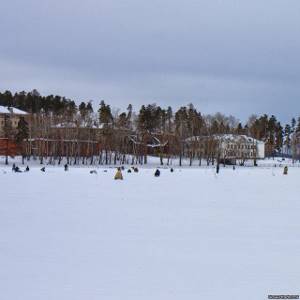
Where to begin? It is better to go to the first winter season lightly - with a minimum of belongings. No tent or heater. And always with experienced friends! They will help, if anything, and give practical advice. The best time for this adventure is a fine day on the first ice - when it has already completely risen and is holding a healthy man with gear.
You can buy raspberries at a fishing store. Breadcrumbs and semolina will be used for bait - they are available in any grocery store.
As a test reservoir, we choose some nearby one, where it is known for sure that there is ruff, sleeper, roach, or perch. These fish (especially rotan) are undemanding and can be caught using the simplest gear.
In the first ice, everything in nature is friendly to the fisherman: the weather is not as severe as it will become later, and the snow cover is thin, and everything that is covered with it along the banks looks very picturesque: all these powdered weeds, bushes, trees - tinted by the sun and the sky in orange-blue shades. And the chilly winter air is as clean and fresh as ever. Even a simple walk to a pond can now bring a lot of positive emotions and aesthetic pleasure.
We chose a place and drilled several holes. We threw half a handful of bait into each, waited a little, and then we put a bloodworm on the hook, unwind the fishing rod, and lower the jig to the very bottom. We stretch the line to slightly raise the bait. We lightly play with a nod, lifting the jig higher. And suddenly it sharply bent downwards. Bite! Let's hook - without a second's hesitation! At the other end of the line there is an unusual weight.
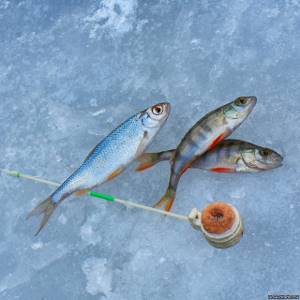
And now, from a dark, seemingly bottomless hole leading into complete uncertainty, the first fish was pulled out. Usually this is the ubiquitous perch. Greenish with black stripes, orange fins and a yellow eye - it seems especially beautiful against the background of white snow.
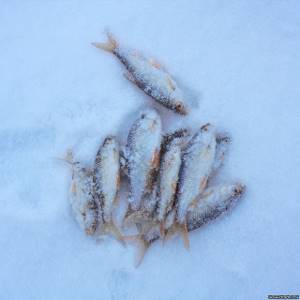
Did you know that in winter fish eat mainly animal food - worms and bugs that live at the bottom and in the water column? At this time, it is not bitter and does not taste like mud - like in the summer, the soup made from it is the best.
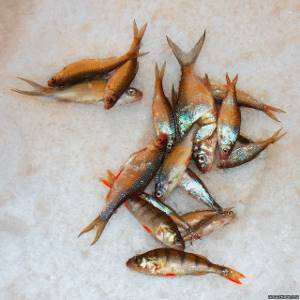
Spending time on winter fishing is in every way more pleasant and useful than filling the balls at home!
Little tricks for successful ice fishing
Winter. Snowdrifts. By the time you get there, you’ll be sweating like a good marathon runner. You begin to regret the fact that you are so insulated about ten minutes after leaving the house.
But the frosts... Before you have time to sit down at the hole, your hands freeze: putting a bloodworm on a hook with naughty fingers is, I tell you, an art purer than jewelry. And a chill runs down your sweaty back. It seems like it’s not that insulated... Maybe I should have thrown on another sweater? And then the pampered wind decides to play with a thin fishing line, and even tangles it in a thick fisherman’s beard. Complete disappointment!
But is everything so bad? If you think about it, winter fishing also has many advantages. On the ice you can get to such holes and dumps that you wouldn’t even dare to dream about in the hot summer. And there are crowds of noisy tourists, always pestering them with questions: “What is this?”, “For what?”, “At what depth?”, “What kind of gear?”, “Will you show me the catch?” - No. And swimmers, who believe that next to your float or spoon is the best place for sprint swims, moved to the pools before the hot days. Beauty! And the winter air is fresh, frosty, sweet... And the silence is crackling. No, no matter what you say, winter fishing is a good thing! And you can reduce the difficulties associated with it to a minimum, and simply make fishing more successful and catchy, with the help of simple and not so tricks, which we will discuss below.
Dress warmly
If someone thinks that the most important thing in winter fishing is gear, they are quite seriously mistaken. In winter, there are no secondary things on the pond, and what you should pay special attention to is how you dress. Four basic requirements for clothing: warmth, lightness, comfort, reliability.
Putting on a lot of different clothes is far from the best option. The cabbage principle will make you clumsy rather than insulated. You should start with a set of thermal underwear. Before putting on your socks, wash your feet thoroughly with cold water and dry them. Contrary to the prevailing stereotype, you should put on woolen socks first, followed by cotton socks. Experienced fishermen recommend adding another layer - newspaper. It will help get rid of excess moisture and keep your feet dry. Shoes should be quite high and have thick soles. The farther your foot is from the frozen icy firmament, the warmer it will be. The most convenient type of pants to choose is overalls - made of light, waterproof, but breathable material. The high back and bib will effectively protect the lumbar region. The trouser legs should fit snugly around the boot tops, keeping snow out of the body. The jacket is usually made of the same material as the pants, with close-fitting cuffs. Underneath it is a not too thick sweater. Be sure to wear gloves and a hat that covers your ears. All this today is sold either in specialized stores or in those that supply uniforms to rangers, police, military or construction workers - everyone who, due to their duty, is forced to spend a lot of time on the street. The tasks of workwear manufacturers correspond to the interests of fishermen, so it makes sense to spend a little time and choose the optimal price/quality ratio for yourself.
Food on ice
Sandwiches you bring with you freeze very quickly. Lard and meat turn into ice, the bread crunches on your teeth. Even cheese is covered with frost. Chewing such food is not the greatest pleasure. My teeth are aching. There is a lump of ice in the stomach and a drizzle on the skin. To prevent this, it is not at all necessary to have a stove with you to heat food. You just need to... sew a roomy pocket to the inside of the jacket. Better yet, use a spacious handbag with a strap across your chest for these purposes. The temperature of the human body is quite enough to prevent food from freezing.
To prevent the hole from freezing
In the middle zone, the ice in December is not so thick. If one or more of the punched holes manage to become covered with an ice crust while the angler is fishing for others, then updating the old hole or drilling a new one is not such a difficult task. But the closer to the North or Far East, the harsher the climate, and therefore the more hassle with drilling ice.
The first and most accessible action: a hole in the ice can be countersunk, that is, its upper part can be expanded by drilling it with an ice drill inclined at 45 degrees. Thus, the hole in the upper part of the hole doubles in size, is cleared of ice more freely and freezes much more slowly.
If a fisherman plans on sedentary fishing, then, as a rule, he takes with him a special small tent, which is installed directly above the hole and quite reliably protects the fisherman from wind and frost. To make it even warmer inside, you should sprinkle the edges of the tent with a layer of snow and light a candle inside the shelter. When fishing at night, for example, bream, a candle installed between two holes will also work as a lamp, helping to monitor the nod or float.
Covering the holes with snow is one of the most popular ways to protect the hole from freezing. Especially when it comes to fishing with bets. But if you do this ineptly, you will most likely achieve a negative result: the snow will get wet, and due to the fact that it is much colder than water, it will cause it to freeze. And the fishing line will hopelessly grow into the ice. As they say - neither hook nor pull. Main advice: take your time! Wait a little until a thin ice crust forms on the first holes, and then carefully sprinkle it with dry snow. This method is capable of protecting the hole from freezing for at least 10 hours in 20-degree frost.
But it is much easier and more effective to use mugs made of non-insulated (that is, not equipped with needle-punched fabric) linoleum as protection. Several of these mugs will take up little space in your fishing box, but they will help a lot. Thick polyethylene is also well suited for these purposes (to obtain this material, it is enough to cut several cans of automobile oil). A hole with a diameter of 5 mm is made in the center for the fishing line, as well as a slot to the edge so that the circle can be easily thrown to the side when bitten.
Finally, if the fishing spot is not far from your home, then you can take with you a couple of old buckets that have lost their bottom. When upside down, they will not only perfectly protect the hole from freezing, but also the fishing line from getting tangled in an unexpected gust of wind. The fishing process looks very funny from the outside, but it is effective.
We get live bait
Pike, large perch, pike perch, burbot... You never know the number of predators that in December would willingly snack on live bait attached to the hook of your fishing rod. But getting live bait is not an easy task. And the little things start to act up precisely when you literally need a few small appetizing fish. Looking for live bait in the depths and open areas is a futile task. Look around and head towards the shore, densely overgrown with willow or willow, or towards reed thickets. Small fish are probably hiding from predators there. And then everything depends solely on your fishing skills.
Nod: buy or make it yourself?
Modern fishing stores offer us fishermen a huge assortment of all kinds of gear and devices. But it just so happens that we love to bring everything to fruition, or even do it completely, with our own hands.
Every man to his own taste. This is just about them: about nods and nods. Well, you can’t get a universal nod, so that it fits all jigs, goats and devils, and so that it stands out in the snow and doesn’t get lost against the background of the hole. These are not available for sale or in fishing boxes, but you can make something close to what you need yourself. And it will take a little time, and there is little that can compare with it in terms of gameplay. And most importantly, it’s not expensive at all. All you need: a dark plastic bottle - its middle part, a stationery knife, some thin wire, superglue, cambric.
Using a utility knife, several thin cone-shaped strips are cut from a plastic bottle. In the lower part - no wider than 4 mm, in the upper part - slightly thinner than 1 mm. To increase the sensitivity of the tackle and improve the game with small, light decoys, it is worth lightly sanding the plastic with fine sandpaper: the closer to the tip, the thinner the layer should be. The tip is bent, a wire loop is passed through the bend, a cambric is put on top, and a little “Super Moment” is dripped into the resulting “lock.” Everyone has their own methods of attaching the nod to the whip. The author of this material prefers to use a 1.5-2 cm piece of braided two-core wire. The upper hole is perfect for both a whip and a nod, and the lower one is intended for fishing line.
Cunning? Well, probably not. But in terms of its working qualities, such a homemade nod significantly “outperformed” everything that the author of the article managed to try. And if so, why not share your experience?
Feeding fish in winter
Every angler knows: if you want to catch well, don’t be greedy with bait. But hooking fish in the summer is one thing, but in the winter it’s a completely different matter. And summer vegetable baits not only will not make fishing more effective, but can also scare away the fish, lying in piles on the bottom.
Calorie content and small size are two requirements for bait in winter. Therefore, we completely switch to animal baits: small bloodworms, tubifex, chopped worms... The main thing is not to overdo it. Fish eat worse in winter. This means that you need to feed her in small portions and not too often. It’s easier to dose the bait, keep the fish interested in your chosen fishing area for a long time and not be frequently distracted by feeding, a little trick will help. Its components: bait, sand and water. A mixture of bloodworms or tubifex with the addition of chopped worms and sand (the ratio of sand and bait is 3:1) is poured into small molds (those used by children to play in the sandbox are quite suitable), all this is filled with a small amount of water and exposed to the cold. It’s very easy to take the finished briquettes out of the mold: pour boiling water over it and the ice brick will jump out into your hands. Before leaving for the ice, the briquettes are put into a bag, which is wrapped in paper and placed in another bag. 2-3 hours of storage without much damage from heat to the bait is ensured even in the trunk of a car, inside a bus or train carriage.
Thanks to the sand, the bait briquette sinks like a stone to the bottom, where it slowly melts, releasing attractive aromas into the water. The fish sees and feels food, it can even pinch off small pieces, but it is not able to satisfy its hunger. This allows you to keep the flock under the hole for a long time.
Take care of your hands!
In the depths of winter, most of the inhabitants of the underwater world are covered with a layer of mucus. This is especially true for ruffs, the favorite delicacy of large pike. Hands smeared with such mucus quickly become chapped, begin to peel, and then completely - many deep and very painful cracks appear on the skin, which also take an extremely long time to heal. To prevent such a nuisance, do not forget to take a clean, dry cloth and a jar of glycerin with you to the pond. It is recommended to rub your hands with glycerin immediately upon entering the ice and repeat the procedure several times during fishing.
Can't get glycerin? Please: here is a recipe for a homemade moisturizing ointment. Melt the fat from 150-200 grams of salted lard, add a tablespoon of Vaseline to it and mix thoroughly. This ointment perfectly softens and protects the skin. It may also be useful to protect the fishing line from freezing.
Lubricate the soles of your boots with this ointment and walking on ice will become much safer. In general - a recipe for many occasions.
Remove fish without getting your hands wet
I will not discover America, but someone may not know about it yet. The best option for winter fishing is a hook with a sawn groove. When fishing for prey, the fisherman does not give it any slack, so the underwater inhabitant has little chance of losing it. But after a large perch, trout or pike finds itself in the fresh air, the catch can be quickly released from the hook and the bait lowered back into the water so as not to miss the opportunity to catch a few more fish from the school that has approached the hole.
By the way, many fishermen note that fish simply left on ice seriously loses its taste. Therefore, it is better to immediately put the catch in your fishing box.
Arseny Mavrin, Kazan
